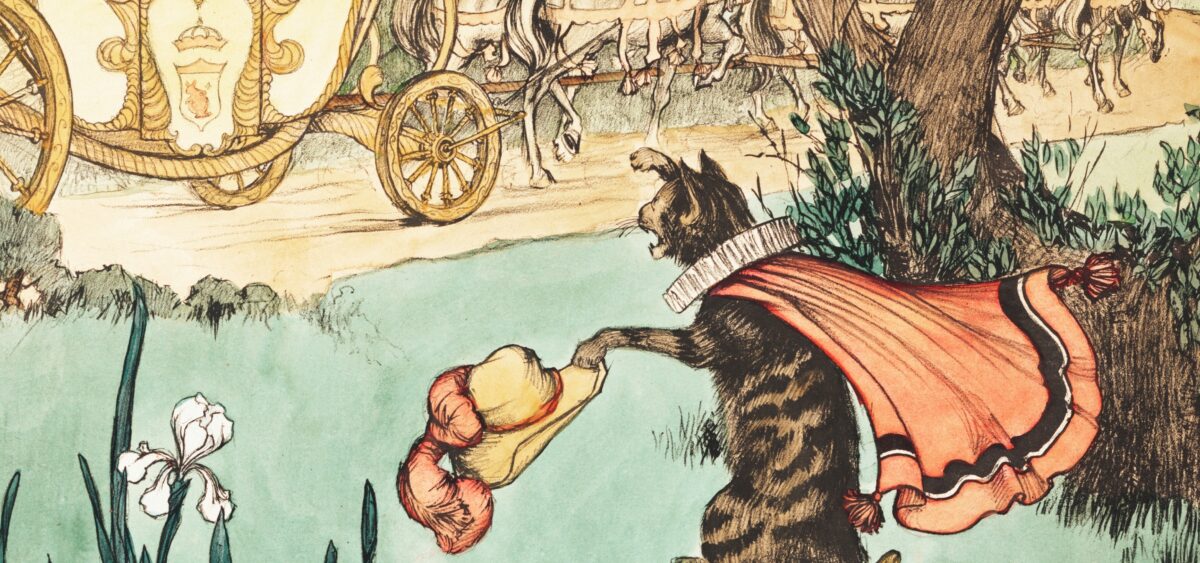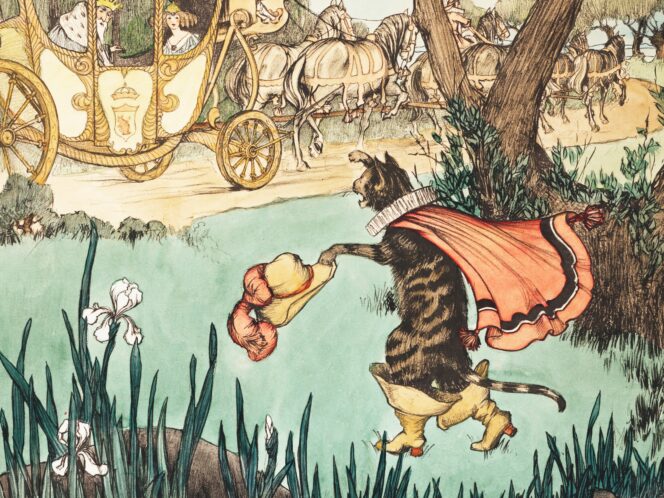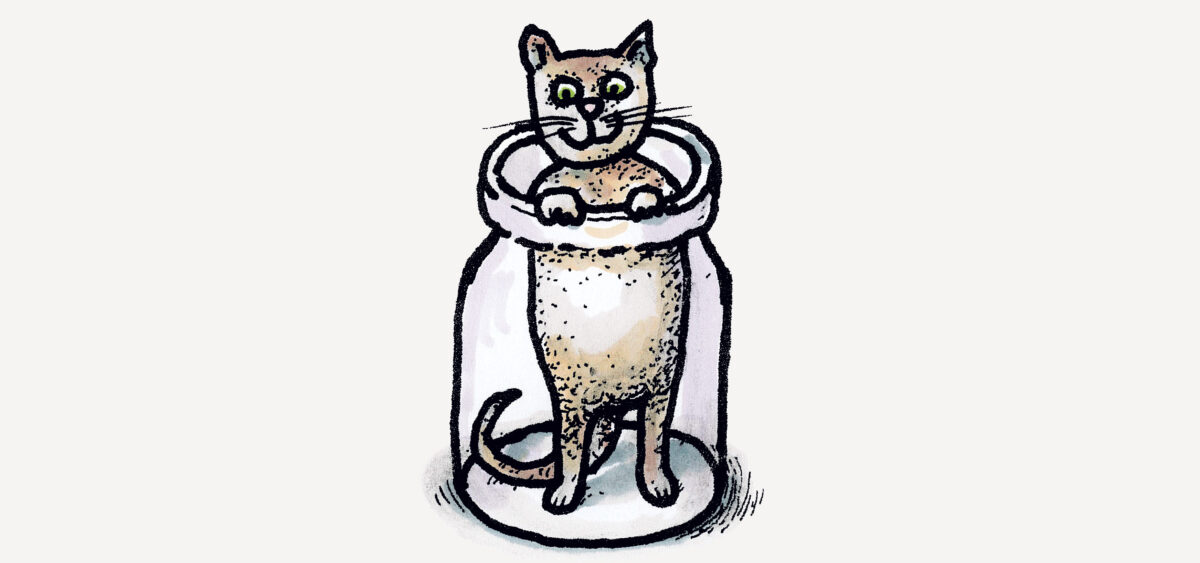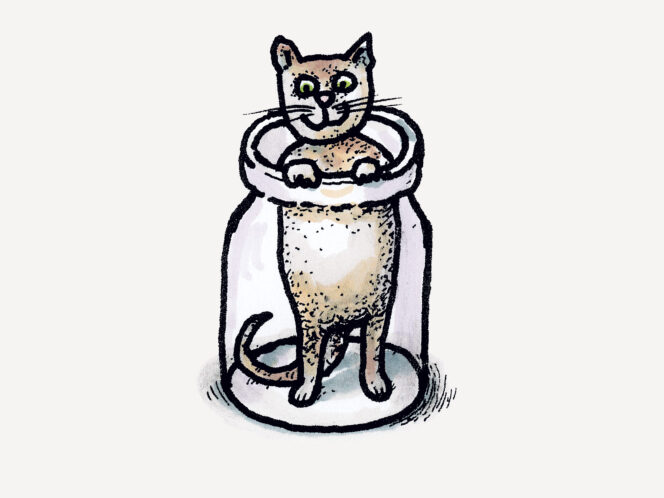
We can learn from cats, especially that famous one in boots! Not only does the story prove how much feline nature we have in us, it also suggests that, to improve our fate, we must first march bravely into the unknown.
Amazingly, the first “Puss in Boots” tale (on which later versions were based) mentioned neither boots nor a cat. It was part of a collection titled Le piacevoli notti (The Facetious Nights of Straparola) by the sixteenth-century Italian writer and poet Giovanni Francesco Straparola. It tells of a fairy (la fatata) disguised as a cat (la gatta), who decides to help one of three brothers who has recently lost his mother. In Europe, where the law of birthright had long prevailed, the first-born son inherited the majority of his parents’ estate. So, from the already paltry family fortune, the youngest brother received nothing but the cat. However, the inherited animal didn’t ask for the titular boots and sack or hunter’s bag, as in later versions of the tale. The Italian gatta was more self-reliant than any of the subsequent feline heroes. After all, she was a fairy with typical feline characteristics that helped her move around in the world: prehensile paws, caution, keen eyesight, and cunning.
But Straparola’s tale contained something that would become the backbone of all “Puss in Boots” stories: the highly








